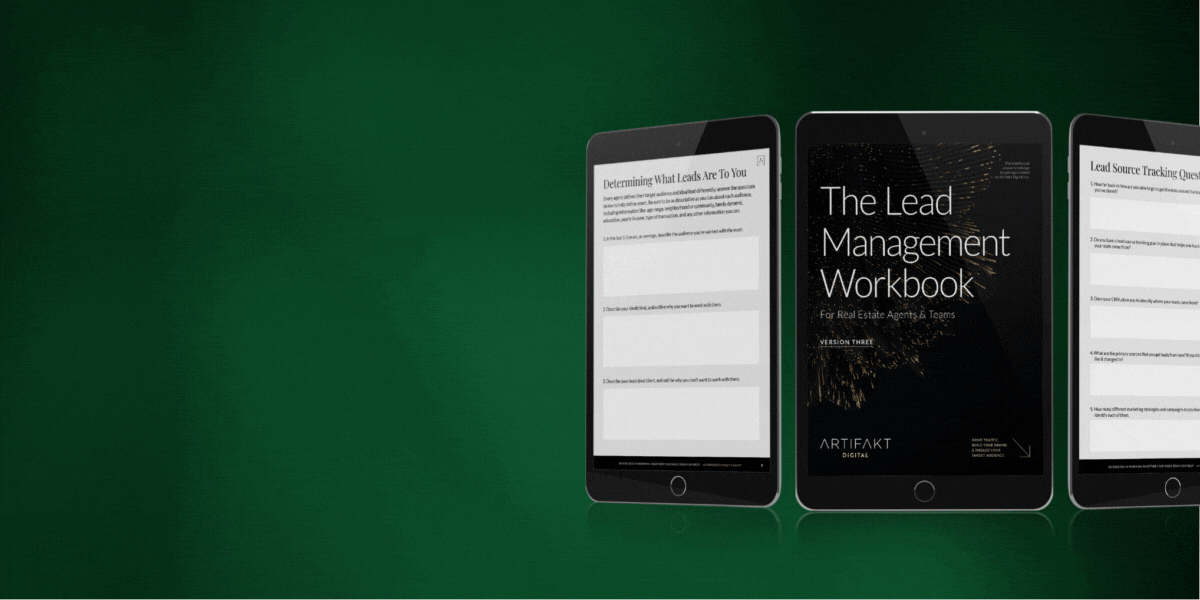There’s nothing worse than having a great conversation with a new lead or existing client, only to find out that they later chose to work with a different agent.
And while there are a lot of reasons that can happen, one of the most likely is that they forgot that you exist because you didn’t do anything to keep in touch with them or nurture them; and if you don’t, someone else will.
There’s a fine line between annoying people and keeping in touch, but most of that revolves around value. Most people are busy, drowning in multiple emails, phone calls, text messages, and notifications every single day; and without providing value, most of those same people are likely to hit the unsubscribe button or block notifications.
So how do you provide value in a world where people are constantly bombarded with information?
Through Email Marketing
A lot agents have a marketing strategy that includes collecting email addresses, but most don’t know how to build an effective strategy around using it. The biggest thing to remember is that the email addresses you have should be treated with respect.
Just because you think some information is useful, it doesn’t mean your audience will.
Everything you send to a client through email marketing needs to be created and sent out purely with your audience’s needs and wants in mind, not yours.
One of the first steps is to clean up and organize your email marketing database. Sending the same information to your entire database isn’t strategic and isn’t likely to get the results you want. That’s where segmentation comes in…
There’s a lot of different ways to segment your audience, for example:
- By initial leads, current clients, and past clients
- By buyers, sellers, or both
- By area or neighbourhood
- By situation, like downsizing, upsizing, etc
A properly segmented audience means you’ll be able to send the right email, to the right person, based on their needs and interests. For example, someone that’s new in the buying process will see value in different information than someone that’s experienced in the selling process; just like someone that lives in the downtown core will see value in different information than someone that’s thinking about moving to the suburbs.
★ If you want to learn more about email marketing strategy, have a look at these posts:
- Email Marketing Best Practices for Real Estate Agents
- How Real Estate Agents Can Improve Their Email Marketing Open Rate
- Building an Effective Email Newsletter Strategy
Your email marketing strategy should be built around sending those people information that’s specific to their needs and the situation they’re in. If you do that, continuously, and they see value, they’ll remember that you exist, and when they’re ready to move forward with a transaction, they’re more likely to reach out to you.
Through Triggers and Automations
There’s a ton of power in giving people the right information at the right time; and triggers and automations can help you do just that.
★ If you want to learn more about automation, have a look at these posts:
- Automating Your Email Marketing List Building
- Leveraging Marketing Automation as Part of Your Inbound Marketing Strategy
- How (and Why) to Build a Real Estate Marketing Segmentation Strategy
If you have a strong blog and content strategy in place, you’ll likely be bringing people into your website consistently. Through marketing automation, you can trigger and send them specific content and emails that further build on whatever they’re looking at.
For example, if someone has looked at 3+ pieces of content about the buying process on your website, and you already have their email address, you can trigger an email to be sent to them that further builds on the buying process, with a CTA that gives them the option to connect with you. By doing that, you’re providing value, and furthermore, providing value at the right time in their buyer’s journey.
If you don’t have their email address, there are still options to build on their user journey as well. For example, if someone is looking at content on your website about the selling process, you can trigger a pop-up that asks them if they have questions about selling, or even one that let’s them know about related content that might help with their research process.
Triggers and automations are powerful because you can push the person down a specific path you want them to take based on what they’re doing on your website right now.
Through Retargeting Advertising
Retargeting is a really effective way to continuously remind your website visitors and target audience that you exist.
By showing ads on other websites that are specific to the content the viewed on your website, they’ll continually see you and your brand when and where it matters, and give them the opportunity to come back and convert.
Specifically, if you have a strategy in place that brings people to your website, it absolutely makes sense to track and market to those people afterwards through retargeting. It’s inexpensive, and when done strategically, can be highly effective. It can run in the background, 24 hours a day, without much ongoing effort from you.
★ If you want to do a deeper dive into retargeting advertising and learn the specifics around how it works, have a look at this post called: The Anatomy of a Successful Real Estate Retargeting Campaign.
Through Digital Resources
Providing free resources is a great way to prove your expertise, again, through providing value. One of the most obvious ways is through a buyer’s guide or seller’s guide, but if you can get even more specific to what people are looking for then that’s even better.
For example, if you were to provide a guide focused on the process of downsizing or relocating, or one focused on hyper-local market stats for a specific area, you’ll be providing information specific to what people are looking for.
Creating multiple versions of these, and sending them out to your database to let them know a new version has been created, is a great way to have a reason to contact them, and also, to further provide value and build expertise.
★ If you’re looking for help you building your overall marketing strategy, click right here to have a look at our extensive list of free resources created specifically for real estate agents.
Make Them Remember You
People are constantly being bombarded with information, and in all likelihood, you have a lot of competitors that are ready and willing to build a relationship with the people that you’ve forgotten about.
To be successful in your touchpoints, you need to go the extra mile to provide value and build in ways to continually remind your database that you exist and that you’re ready to help.
Want to improve your overall lead generation plan? Download our Lead Management Workbook. It’s a self-guided, interactive workbook where you answer questions about your current lead generation plan, outline what’s working and what isn’t working, and put together a plan to improve it. And, it’s free to download.




